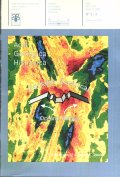Caracterización geológica de la región de enlace entre la Cuenca de Bransfield y la Dorsal Sur de Scotia (Antártida)
Abstract
In February 1992, a geological and geophysical survey was carried out in the NW Antarctic Peninsula region, between South Shetland, Elephant and Orkney Islands (Antarctica), during the "Scotia 92" cruise aboard BIO Hespérides. The multi-channel seismics, magnetics and gravity data show the different sedimentary characteristics between Scotia and Powell Basins. At the western end of the South Scotia Ridge (SSR), an area (50 x 100 km) covered by multibearn bathymetry reveals a maximum depth of more than 5,300 m corresponding to what we refer to as the Hespérides Deep. The SSR is a sinistral transform plate boundary between the Scotia and Antarctic plates (on the north and south respectively). The morphology of the SSR is constituted by two ridges separated by a deep and narrow valiey (10 to 30 km wide). Two main families of faults can be distinguished, one trending E-W and parallel to the plate boundary, and another one trending NW-SE. We iriterpret that the former accommodates the regional strike-slip motion, whereas the later has an extensional component which may be related to the main trend of Bransfield Basin. The rhomboid-shape of the Deep is the result of the interplay between both sets of faults. Assuming that the transform boundary runs between the two ridges we consider that the Hesperides Deep is a smaU puli-apart basin developed by the sinistral strike-slip motion along the SSR.


